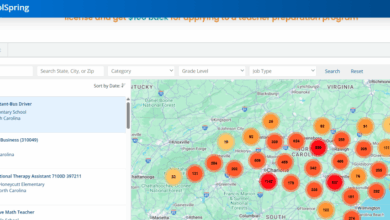We need more coherent and transparent data to inform funding in education in emergencies and protracted crises

By the GEM Report and Education Cannot Wait

There is a growing recognition of the central role of education in responding to increasing needs across humanitarian and development contexts. However, information on the way education in crises is financed remains scattered and incomplete. A new joint policy paper released by Education Cannot Wait (ECW) and the GEM Report, Funding for education in crises: Data in distress, shows that the three main data systems provide only a partial view, making it difficult to monitor resources and coordinate effectively, especially as education interventions draw on both development and humanitarian funding.
The paper highlights the urgent need to harmonize reporting systems to ensure transparency, consistency and impact for global investments in education in emergencies and protracted crises (EiEPC).

Breaking the humanitarian-development divide:
The paper highlights that armed conflict, climate shocks and forced displacement have become persistent features of global crises, with the average length of a humanitarian appeal now being 10 years and protracted crises characterizing 91% of these appeals.
In this context, education interventions increasingly span humanitarian and development programming. Meanwhile, the mechanisms for financing and tracking humanitarian and development funding for education remain largely separate, monitored through distinct systems with different standards.
Drawing on data from the three global databases providing information on aid to education – the Organisation for Economic Co-operation and Development (OECD) Creditor Reporting System (CRS), the UN Office for the Coordination of Humanitarian Affairs (OCHA) Financial Tracking Service (FTS) and the International Aid Transparency Initiative (IATI) – together with country-level education financing case studies, the paper shows that the current fragmentation of these systems limits opportunities for strategic planning, funding alignment and effective advocacy.
The paper stresses that education is one of the most underfunded sectors within humanitarian responses – according to FTS data, only 29% of education funding requests in humanitarian appeals were met in 2024. Looking ahead to 2025, the situation has worsened. A recent analysis by the Global Education Cluster reveals that, due to global funding constraints, the humanitarian system has adopted a process called ‘hyper-prioritization’, which has forced aid agencies to dramatically reduce their ambitions. As a result, the total education funding requested for 2025 has been cut by 33% and the number of people targeted for education assistance has been reduced by 43% – with some countries seeing reductions of up to 90%. Compared to other major humanitarian sectors such as food security, protection, WASH, health and nutrition, education has experienced some of the most severe cuts. These reductions do not reflect a decrease in needs, but a narrowing of the response due to limited resources. This underscores the urgent need for more predictable, transparent and better-coordinated financing for education in crisis settings.
Development aid accounts for increasing shares of funding for EiEPC
At the same time, analysis from the CRS database in the Data in Distress paper indicates that development aid accounts for an increasing share of funding for education in crises globally. The paper looks across six countries hosting the largest numbers of crisis-affected school-age children and people in need of education assistance to show that similar trends can be seen at the national level. This highlights major gaps between needs and reported funding.
Humanitarian aid to education represents a small proportion of funding even in crisis-affected countries
Share of humanitarian financing in total aid to education, six crisis-affected countries, 2021–24
Despite high humanitarian needs, only 12% of reported education funding in the six countries appears in FTS. Including IATI data marked as ‘humanitarian’ raises this to just 15%. Yet, among the six countries, Ethiopia, South Sudan, Nigeria, and the DRC host the largest numbers of crisis-affected school-age children and people in need of education assistance—according to the Global Education Cluster and ECW—yet appear to receive limited humanitarian education funding. This highlights major gaps between needs and reported funding.
Combining these data, funding for education in crises accounts for an increasing share of total aid to education. Reflecting the increase and length of crises, the analysis found that the share of education in emergencies and protracted crises has increased from 9% in 2017 to 12% in 2023. In countries with humanitarian response plans in place for more than three years, the share rose from 21% to 24% in this period.
But development aid to education set to decline in the coming years
At the same time, overall aid to education is expected to decline. The second paper on education financing released last week by the GEM Report, Aid to education: Time for tough decisions, projects that aid will fall by more than 25% by 2027. Just one fifth of this funding is allocated to low-income countries, where it accounts for 17% – sometimes up to half – of public education spending, making cuts especially damaging. These countries will be hit hardest, with some expected to lose as much as half of their current aid levels despite growing needs. Given that more than half of all low-income countries also issued humanitarian education appeals in 2025, and with the share of humanitarian aid within EiEPC funding declining, those with appeals will face severe financing constraints – putting millions of children’s education at risk.
We need coherent and transparent data to inform investments in education
As some donors now pledge to safeguard humanitarian education funding in the face of broader cuts to official development assistance, greater clarity is needed to determine what is being protected and which areas may still be at risk of underfunding.
The two papers call for urgent reforms to improve aid effectiveness, including shifting more resources to multilateral channels and budget support aligned with national priorities to reduce fragmentation. They also recommend increasing funding through global funds like ECW which can better coordinate efforts, reduce duplication, and support stronger institutional development for more equitable and sustainable education outcomes.
To fix data in distress, increased coordination is needed to align the main reporting systems – the CRS, FTS and IATI – and improve the reporting standards. Ensuring a more comprehensive and consistent tracking of funding for education in crises is crucial to support policymakers and education aid stakeholders in making informed financing decisions across the humanitarian-development .
Building on the findings of this joint policy paper, ECW and the GEM Report will continue to strengthen consolidated analysis of education financing, promote greater transparency and alignment across reporting systems, and advocate for sustained and equitable investments in education in emergencies and protracted crises. In a context of growing needs and constrained resources, this work remains vital to ensure no child is left behind.





